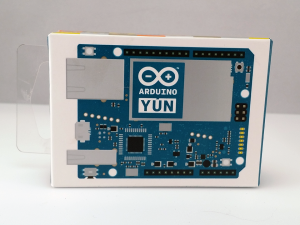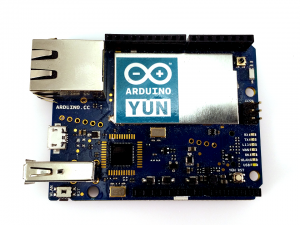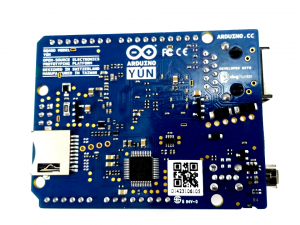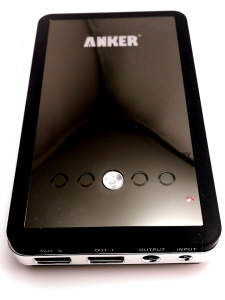I’ve had my eye on the Arduino Yun since it came out, but between an Uno, a Duemilanove, and a handful of shields, I always had something to play with and hadn’t run into any limitations that justified picking one up at the expense of some other shiny, new toy. Last week, however, a perfect storm of in-store sale and promotional coupons at RadioShack, put the Yun at a price I just couldn’t say no to.
I must say that I thoroughly enjoy this board. It is so nice having the second processor running a flavor of OpenWrt. Not only does this Atheros processor handle the heavy lifting for the board’s network connections, microSD card, and USB host, but because OpenWrt is built on Linux, I’ve also got access to whole bunch of other goodies like a shell, Python(!), etc. The icing on the cake is that the Atheros processor integrates fairly seamlessly with the Yun’s “Arduino” AVR processor, an ATmega32u4. Using the Bridge Library that connects the two, the ATmega, and therefore, my sketches have access to and control over the Linux processes and peripherals of the Atheros.
Unlike most other Arduino boards, the Yun requires a pre-regulated 5V from its power supply. It has no onboard regulator to handle large voltages, so anything greater than 5V will likely damage the board. As such, the recommended way to power the Yun is via its micro-USB connector. As per the specification, a computer’s USB 2.0 ports should output 5V at a current of up to 5mA. I do use the use the USB port on my MacBook Pro quite often to power the Yun, But since one of the most attractive features of the Yun is its built in WiFi, I also like the idea of prototyping it while it is untethered to my laptop or a wall outlet. (Did I forget to mention that sketches can also be uploaded to this bad boy wirelessly!?)It just so happens that I have a Anker Astro3 external battery pack that puts out 5V/2A over USB. Its rated at 10000 mAh so I get plenty of truly wireless development time.
The only big issue I have at this time is that most of shields I have don’t fit the Yun without some extra work. While the pin layout is the same as the Uno, the height of the Yun’s ethernet port means that the header pins on all but my motor driver shield are too short by default to seat the shield satisfactorily, if at all. This is hardly a deal breaker. As matter of fact, I suspect I may address this problem in a future post. Stay tuned!




